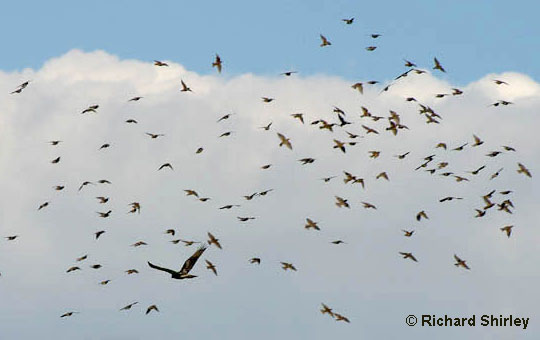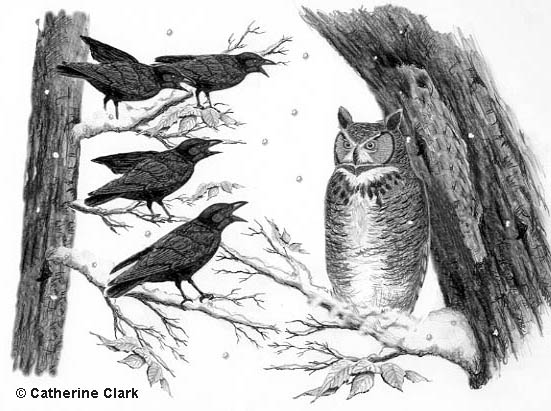Posted by Daria Erastova @Kuukso
This month I visited Australia for the first time in my life and was very impressed by the number of wildlife encounters I experienced in only 10 days! As an ornithologist, I always pay attention to birds and what they are up to. The avian diversity as well as all the noises the creatures were producing was simply overwhelming. But there was one thing which added significantly to the Aussie bird chorus and disturbed not just me, but other birds as well. I am talking about mobbing, which I have observed many times both in Europe and now in Australia, but never in New Zealand.

Mobbing is a popular term and is used to describe bullying of an individual by a person or a group in any context. However, not many people know that this sociological term was first described by the remarkable and outstanding ‘father of ethology’, Konrad Lorenz in 1966. Lorenz observed this behaviour among birds and other animals and suggested it has something to do with the deepest animal instincts aimed at surviving and protecting a group. Later it was found that some non-predator birds use mobbing against diurnal and night predators, such as owls, hawks, etc. Mobbing birds fly in very noisy and angry groups around a roosting place or a tree hole where they found a predator to attract as much attention as possible and to finally make their enemy retreat from the area. It makes perfect sense for them to get rid of potential threats before darkness falls when they all become helpless while roosting. It also explains why night hunters have camouflage plumage and sit still in the day with their eyes closed. Nothing could be more frustrating than to be awakened by a bunch of clamorous moppets!

The way evolution works, one advantage can often be used in a different context. As I’ve mentioned, bird diversity in Australia is exceptionally high, which leads to high competition for resources. The scene I witnessed in Sydney, was a mobbing of a kookaburra family by species with a very self-explanatory name, the noisy miner. I was sad to see it, not only because the population of kookaburras is declining while the population of noisy miners grows exponentially, but also because I am very fond of kookaburras. These birds feed mostly on small animals and rarely on smaller birds, imposing no threat to things like noisy miners. However, when we think of evolutionary pathways, we could conclude, that mobbing in this situation is directed to resource and space access, which is indirectly connected to survival, rather than direct mortality.

In New Zealand mobbing is not that widespread probably due to the low number of natural avian or mammalian predators. Brent Stephenson showed that morepork is mobbed by at least 9 passerine species, including natives like fantail, silvereye, saddleback, stitchbird and tui. Alison Stanes revealed that the native diurnal predator, the swamp harrier, gets mobbed by colonial birds, such as stilts. But how about mobbing invasive pests? A very interesting work by Richard Maloney and Ian McLean showed that native New Zealand robins were capable of recognising and mobbing stoats after a one-event learning experience. The good news for us is that this study suggests predator training may be a valuable addition to many reintroduction programmes for endangered species. Let’s mob the pest away!

Daria Erastova is a PhD student at the School of Biological Sciences, University of Auckland, who studies the effect of sugar-water feeding on behaviour and health of native New Zealand birds in urban context. This research is supervised by Margaret Stanley, Kristal Cain (The University of Auckland) and Josie Galbraith (War Memorial Museum). The study is funded by Birds New Zealand, Forest and Bird, and Centre for Biodiversity and Biosecurity.
twitter: @Kuukso
web-page: https://sugarfeederproject.wixsite.com/sugarfeeder
email: dera076@aucklanduni.ac.nz
Interesting article, thanks. I can’t help but find metaphors of current rioting and looting mobs who rid neighborhoods of Kookabura honest businesses. Humans.
LikeLike